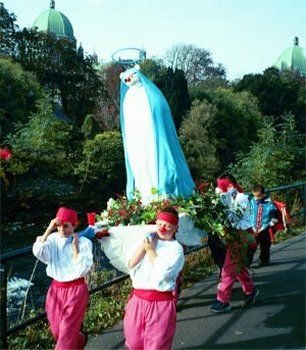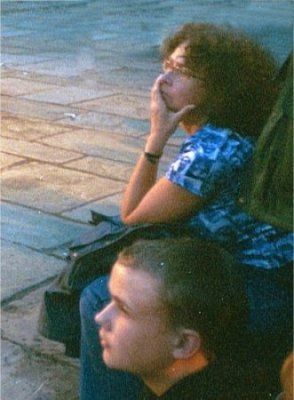Why Choose Community Arts?
“Artists need to be aware of the tremendous amount of extra responsibility they are taking on in community arts work which is not normal for them in their studios. They are asked to be social workers, psychiatrists, politicians, caretakers, humanitarians, as well as great artists! No amount of training could accomplish that unless they have the temperament, willingness and full understanding of the task”.
Kai Chan, visual artist, Toronto, Ontario sums up the reality of an artist s role in community arts work.
" It is not simply about an artist working in or with a community. All participants in community arts activity should possess a strong desire to strengthen community through a collaborative, collective, creative process".
In this context, it is obvious that community arts is not for every artist or every community.
Community arts demands both artists and community participants to assume a variety of roles in addition to that of co-creator or facilitator. Responsibilities of participants are seldom limited to three or four functions. Individual artistic vision and expectations need to be merged with those of the community.
Before committing to a community arts project, it is important to carefully consider your personal interest and motivation for wanting to work in community arts. When is community arts the most appropriate means of artistic expression?

County Galway Community Arts Network

County Galway Community Arts Network.
For artists, this may be:
- when their skills are sought by other members of a community, as in the case of the artists who were invited to participate in the Northwood Arts Program (page 24);
- when seeking social change by using artistic skills and expertise, such as the artists organizing Tele-Vecindario (page 38);
- when wanting to memorialize or draw attention to social issues by experimenting with socially-based methods of artistic work, as in El Cab Art in a Taxi (page 42);
- when individual artistic interests evolve into community-based work, as in Mosaic Creek (page 28);
- when community arts projects in progress are given added support and attention, such as The Selma Project (page 40)
For communities, this may be:
- when marking a public celebration or amplifying community identity, as in The Mountain Project (page 22);
- when facilitating community self-expression and identity, as in West Meets East (page 42);
- when redefining community image in the eyes of larger publics, such as private industry, as in the Elevated Wetlands (page 26);
- as an artistic extension of education or training, as in the Aboriginal Project (page 45
Both artists and community participants require certain characteristics and skills to carry out a community arts project.
These include:
- patience, flexibility and adaptability; .ability to communicate with and listen to other community members;
- ability to share and draw out talent from participants;
- team-building and motivational skills; .negotiating and interpersonal skill
Those who think they have the personality and skills to work in community-based art, and want to get more information on the actual hands-on experience, may want to:
- experience a project currently being undertaken by a local artist and community go on-site and see how they work together, ask them questions about the project.
- find local community arts facilitators (local arts councils or community centres can provide names);
- talk to those who are practicing community arts about their experience working in this art form.

County Galway Community Arts Network.
Key Ingredients for Community Arts Projects
One of the keynote speakers at the Vital Links conference was Kathie Muir, Australian artist, unionist and community arts facilitator. She spoke about five ingredients to a good community arts project.
They are:
- adequate time for the project;
- clear decisions about the respective roles, obligations and responsibilities, especially around the issue of consultation and control;
- respect for the skills of artists their industrial and moral rights and the rights of participants and their stories;
- adequate funding;
- the need for a very good person inside the community organization who is responsible for its ongoing management.